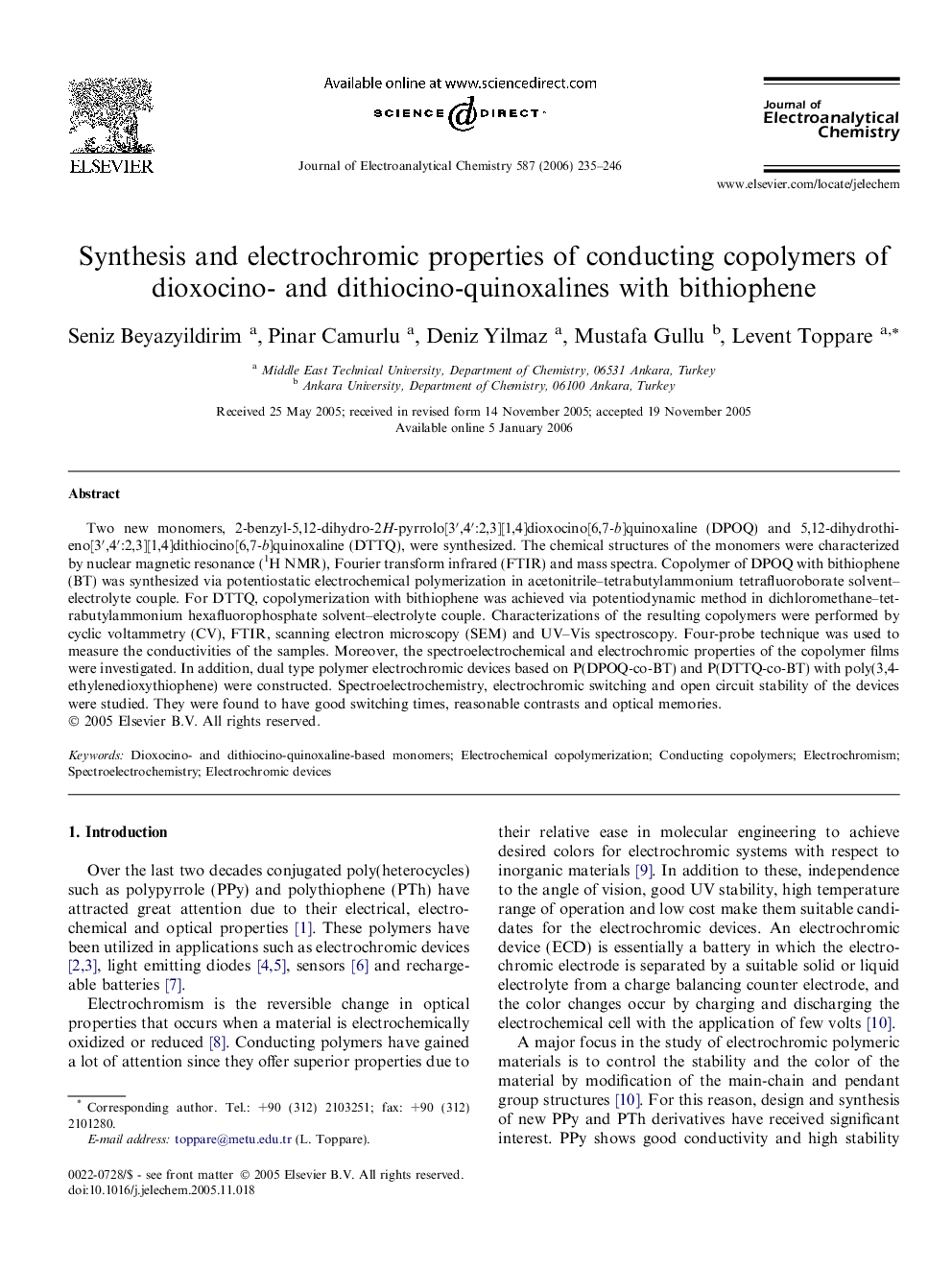| Article ID | Journal | Published Year | Pages | File Type |
|---|---|---|---|---|
| 221462 | Journal of Electroanalytical Chemistry | 2006 | 12 Pages |
Two new monomers, 2-benzyl-5,12-dihydro-2H-pyrrolo[3′,4′:2,3][1,4]dioxocino[6,7-b]quinoxaline (DPOQ) and 5,12-dihydrothieno[3′,4′:2,3][1,4]dithiocino[6,7-b]quinoxaline (DTTQ), were synthesized. The chemical structures of the monomers were characterized by nuclear magnetic resonance (1H NMR), Fourier transform infrared (FTIR) and mass spectra. Copolymer of DPOQ with bithiophene (BT) was synthesized via potentiostatic electrochemical polymerization in acetonitrile–tetrabutylammonium tetrafluoroborate solvent–electrolyte couple. For DTTQ, copolymerization with bithiophene was achieved via potentiodynamic method in dichloromethane–tetrabutylammonium hexafluorophosphate solvent–electrolyte couple. Characterizations of the resulting copolymers were performed by cyclic voltammetry (CV), FTIR, scanning electron microscopy (SEM) and UV–Vis spectroscopy. Four-probe technique was used to measure the conductivities of the samples. Moreover, the spectroelectrochemical and electrochromic properties of the copolymer films were investigated. In addition, dual type polymer electrochromic devices based on P(DPOQ-co-BT) and P(DTTQ-co-BT) with poly(3,4-ethylenedioxythiophene) were constructed. Spectroelectrochemistry, electrochromic switching and open circuit stability of the devices were studied. They were found to have good switching times, reasonable contrasts and optical memories.
